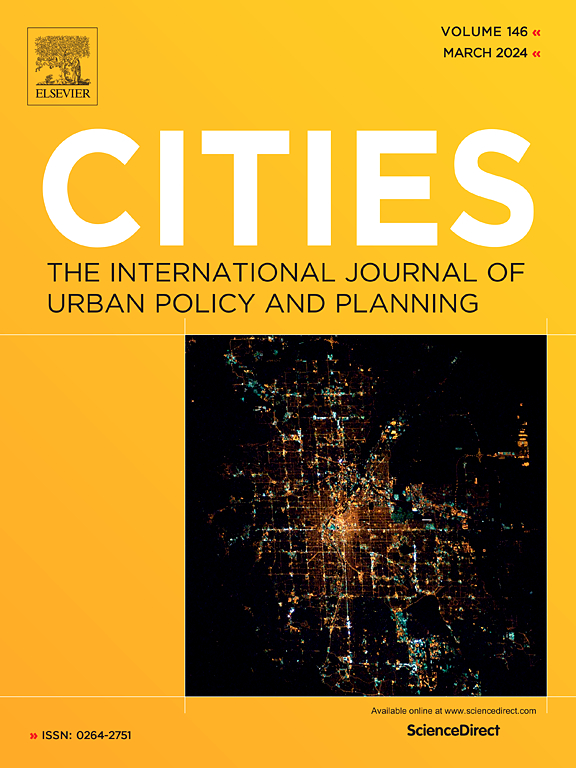基于15分钟城市概念的索菲亚社区步行性分析
IF 6
1区 经济学
Q1 URBAN STUDIES
引用次数: 0
摘要
城市可步行性和可达性对可持续城市发展至关重要,影响公共卫生、环境质量和社会凝聚力。公园、学校和卫生服务等兴趣点(poi)在使城市地区适合步行方面发挥着关键作用,尤其是在住宅建筑附近。本研究采用了15分钟城市概念,并引入了一个可达性指数来评估住宅对poi的可达性,该指数结合了Shannon和Simpson指数等多样性指标。人行道基础设施和行人网络连通性使用加权poi来衡量可步行的可达性。通过在可达性、POI丰富度和均匀度方面定义可持续城市环境,该研究为评估城市社区与15分钟城市概念的合规性提供了一个强大的工具。该研究应用于索非亚的Lozenets地区,根据其使用情况对4000个poi进行分组和加权。GIS分析计算了邻近性,揭示了社区之间可达性的显著差异,规划较好的地区显示出更强的步行性。结果表明,该区不同街区之间的可达性和多样性存在显著差异,欠发达地区和新建地区落后于城市中规划完善、管理良好的公共基础设施空间规划、分布和发展良好的地区。研究结果强调了深思熟虑的城市设计和规划在培育环境方面的重要性,鼓励步行作为一种可行的首选移动方式。本文章由计算机程序翻译,如有差异,请以英文原文为准。

Walkability analysis of Sofia's neighborhoods powered by 15-minute city concept
Urban walkability and accessibility are essential for sustainable urban development, affecting public health, environmental quality, and social cohesion. Points of Interest (POIs) like parks, schools, and health services play a key role in making urban areas pedestrian-friendly, especially when located near residential buildings. This study applies the 15-minute city concept and introduces an Accessibility Index that evaluates residential access to POIs, incorporating diversity metrics such as the Shannon and Simpson indices. The sidewalk infrastructure and pedestrian network connectivity are accessed using weighted POIs to measure walkable access. By defining a sustainable urban environment in terms of accessibility, POI richness, and evenness, the study delivers a robust tool for assessing the compliance of urban neighborhoods with the 15-minute city concept. Applied to Sofia's Lozenets district, the study examines 4000 POIs grouped and weighted based on their usage. GIS analysis calculates proximity, revealing significant differences in accessibility between neighborhoods, with better-planned areas showing stronger walkability. Results show significant differences in accessibility and diversity between different neighborhoods in the district, with less developed and newly built areas lagging behind more thoroughly planned and well-managed parts of the city where space for public infrastructure is well planned, distributed, and developed. The findings highlight the significance of thoughtful urban design and planning in fostering environments that encourage walking as a viable and preferred mode of mobility.
求助全文
通过发布文献求助,成功后即可免费获取论文全文。
去求助
来源期刊

Cities
URBAN STUDIES-
CiteScore
11.20
自引率
9.00%
发文量
517
期刊介绍:
Cities offers a comprehensive range of articles on all aspects of urban policy. It provides an international and interdisciplinary platform for the exchange of ideas and information between urban planners and policy makers from national and local government, non-government organizations, academia and consultancy. The primary aims of the journal are to analyse and assess past and present urban development and management as a reflection of effective, ineffective and non-existent planning policies; and the promotion of the implementation of appropriate urban policies in both the developed and the developing world.
 求助内容:
求助内容: 应助结果提醒方式:
应助结果提醒方式:


